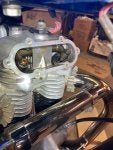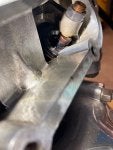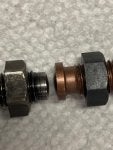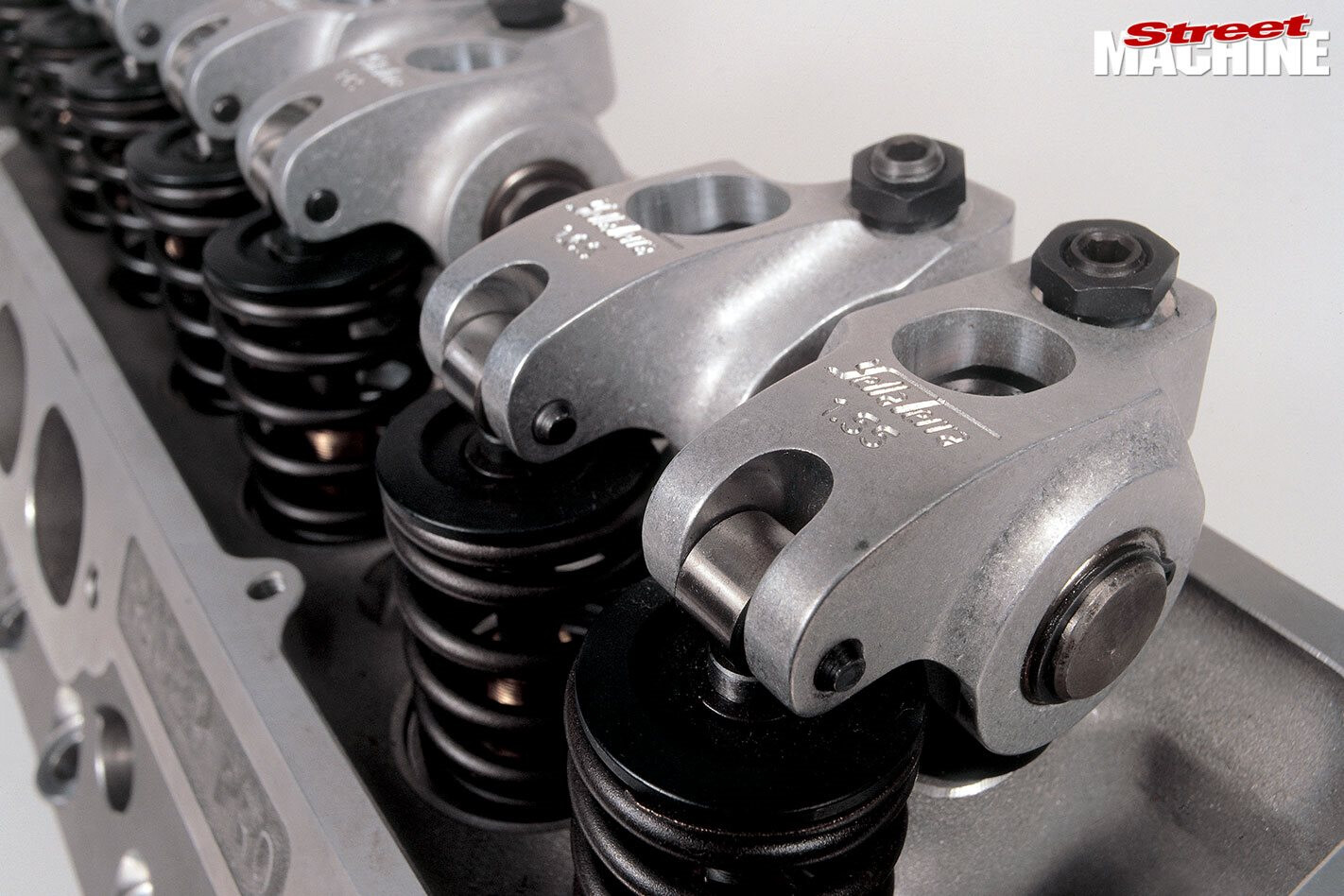Hi All, Follow up on mushroom valve adjusters.
I’ve only covered 2400 miles on overhaul. Mushroom adjusters cannot be removed for inspection & the large diameter makes it hard to see wear pattern on top of valve stem.
Users report longer wear of both adjuster & tip of valve stem with mushroom adjusters.
To be clear, there is no rolling action whatsoever. It’s sliding line contact EXACTLY the same as normal adjuster.
So why the better wear? On two possible reasons. Better material or what??
I want to know the what.
After running motor with valve covers off, I made a few observations.
The wider angle photo was taken about 15 seconds after running 4000 rpm. Expand photo, notice there is a practically no oil on rocker arm, yet there is a small ring of oil on top of the mushroom....
I have observed on normal adjuster there is basically zero oil on adjuster after running same rpm.
It is my very strong hunch, that the real reason the mushrooms give longer service life is the upper surface of head of mushroom is indeed collecting oil mist, which finds its way to the tip of valve stem & provides more lubrication.
Again a hunch. However there is no question after observing rubbing pattern on valve tip with normal adjuster & mushroom, the rubbing patter is virtually identical. The radius of both measures the same also.
On an aside, the photo of intake valve with lash cap shows the rotational wear pattern of lash cap. My observation from automotive use of lash caps & adjuster shims that bare on valve stem, is the rotation will wear a point on valve stem. However this is a fraction of the wear rocker adjuster screws do to valve stems. Stem tips that have copious oil supply seem to wear much less as would be expected.
Conclusion so far is it's much too low of miles to make any conclusion of how the stem tip & mushroom will fare over 15-30k miles. Don
I’ve only covered 2400 miles on overhaul. Mushroom adjusters cannot be removed for inspection & the large diameter makes it hard to see wear pattern on top of valve stem.
Users report longer wear of both adjuster & tip of valve stem with mushroom adjusters.
To be clear, there is no rolling action whatsoever. It’s sliding line contact EXACTLY the same as normal adjuster.
So why the better wear? On two possible reasons. Better material or what??
I want to know the what.
After running motor with valve covers off, I made a few observations.
The wider angle photo was taken about 15 seconds after running 4000 rpm. Expand photo, notice there is a practically no oil on rocker arm, yet there is a small ring of oil on top of the mushroom....
I have observed on normal adjuster there is basically zero oil on adjuster after running same rpm.
It is my very strong hunch, that the real reason the mushrooms give longer service life is the upper surface of head of mushroom is indeed collecting oil mist, which finds its way to the tip of valve stem & provides more lubrication.
Again a hunch. However there is no question after observing rubbing pattern on valve tip with normal adjuster & mushroom, the rubbing patter is virtually identical. The radius of both measures the same also.
On an aside, the photo of intake valve with lash cap shows the rotational wear pattern of lash cap. My observation from automotive use of lash caps & adjuster shims that bare on valve stem, is the rotation will wear a point on valve stem. However this is a fraction of the wear rocker adjuster screws do to valve stems. Stem tips that have copious oil supply seem to wear much less as would be expected.
Conclusion so far is it's much too low of miles to make any conclusion of how the stem tip & mushroom will fare over 15-30k miles. Don









